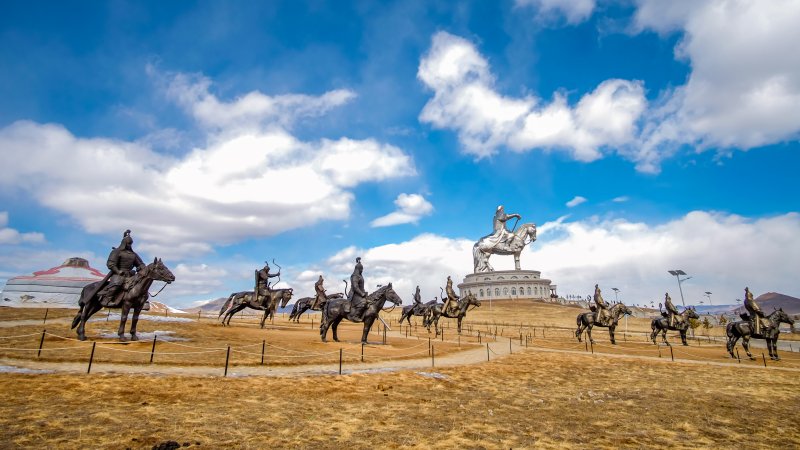Is The Tomb Of Genghis Khan Hidden And Protected In The Khentii Mountains Because Some Fear It’s Cursed?
Ellen Lloyd - AncientPages.com - What ancient secrets are hidden in the Khentii Mountains? Is the tomb of the great warrior Genghis Khan hidden deep inside the mountains? Is this the reason why this region is a protected zone that we are not allowed to enter?
Credit: Adobe Stock - Andrey Burmakin
The location of the tomb of Genghis Khan remains an unsolved ancient mystery. Finding the burial place of the 13th-century warrior, conqueror, and imperial ruler would be one of the greatest archaeological discoveries of all time. Still, all attempts to locate the ancient tomb have failed so far. Is it because the tomb of Genghis Khan is deliberately hidden and protected from the outside world because some fear it’s cursed?
Ancient Secrets Of Sacred Burkhan Khaldun Mountain – Protected And Forbidden Zone
Many experts believe Genghis Khan was buried somewhere in a valley near the sacred Mongolian mountain of Burkhan Khaldun, near his birthplace in Khentii Aimag, northeastern Mongolia.
Great Burkhan Khaldun Mountain and its surrounding landscape lie in the central part of the Khentii Mountains chain that forms the watershed between the Arctic and Pacific Oceans.
Burkhan Khaldun Mountain - Image credit: Wikipedia
It is believed that Genghis Khan built a beautiful place in the Khentii Mountains, called the Great Taboo or Ikh Khorig, by the Mongols. According to an ancient legend Genghis Khan stated that this was the place where he wanted to be buried.
Many historians suspect Genghis Khan’s tomb was a vast necropolis deep inside the mountains. After the construction was completed, all tomb builders were executed to conceal the secret. Even the soldiers who killed the builders of the tomb were executed. One historical source holds that 10,000 horsemen “trampled the ground so as to make it even.” Another source states a forest was planted over the site to hide the leader in his final resting place.
Today, it’s challenging to judge how much of this is true, but there are reasons to suspect the tomb of Genghis Khan, the Great Khan and founder of the Mongol Empire is really buried somewhere in the Khentii Mountains.
Investigating the region and looking for Khan’s tomb is easier said than done because the Mongolian government forbids access to the site.
For 800 years, Mongolia's sacred mountain, Burkhan Khaldun, associated with Genghis Khan's origin, has been part of the Khan Khentii Strictly Protected Area. Tourists and travelers are forbidden to enter this remote area.
Genghis Khan as portrayed in a 14th-century Yuan era album; the original version was black and white. The original size is 47 cm wide and 59.4 cm high. Paint and ink on silk. Now located in the National Palace Museum, Taipei, Taiwan. Credit: Public Domain
Some years ago, an expedition supported by the University of California, San Diego, and the National Geographic Society was granted permission to explore the mountain range. National Geographic’s Valley of the Khans Project and archaeologist Fredrik Hiebert used satellite imagery to identify potential locations for the burial site of Genghis Khan and then “ground-truthed” the areas with GPR to determine their viability.
The tomb of Genghis Khan was not found. Are we looking in the wrong place, or is it simply very well hidden?
Fear The Tomb Of Genghis Khan Is Cursed
Many traditional Mongolians are afraid Khan's tomb is cursed. Some fear finding Genghis Khan's tomb will bring about the end of the world.
People connect the search for Khan's tomb with the discovery of the resting place of Timur, a 14th Century Turko-Mongol military leader who conquered most of the Muslim world, central Asia, and parts of India.
When Timur died in 1405, his tomb was inscribed with one of the most convincing curses in history, reading: "When I rise from the dead, the world shall tremble."
The quest for Khans' tomb will continue. The Genghis Khan statue complex Ulaanbaatar, Mongolia. Credit: Adobe Stock - Nuttee
Another inscription on his casket read: "Whomsoever opens my tomb shall unleash an invader more terrible than I." Russian archaeologists ignored the warning and opened the tomb. Three days later, Adolf Hitler launched Operation Barbarossa, the largest-ever military invasion of the Soviet Union.
Many think that opening the cursed tomb of Timur tomb triggered some of the biggest struggles of World War 2, and they worry something similar might happen if Genghis Khan's tomb is located and opened.
According to historian John Man finding the tomb in Mongolia would have 'geopolitical repercussions'
In his book Genghis Khan: Life, Death, and Resurrection, he wrote: “Many people in China believe Mongolia, like Tibet, should be part of China, as it was under Kublai Khan.
"If China succeeds in establishing mining rights in Mongolia and a dominance over that industry, then Genghis’s tomb might become a focal point for political ambitions, the like of which we have never seen.”
Interestingly, not one single artifact has been found that belonged to the leader who killed more than 40 million people.
Perhaps some things are not meant to be found...
Updated on November 27, 2023
Written By Ellen Lloyd - AncientPages.com
Copyright © AncientPages.com All rights reserved. This material may not be published, broadcast, rewritten or redistributed in whole or part without the express written permission of AncientPages.com
Expand for referencesMore From Ancient Pages
-
 Early Toilets Reveal Dysentery In Old Testament Jerusalem
Archaeology | May 26, 2023
Early Toilets Reveal Dysentery In Old Testament Jerusalem
Archaeology | May 26, 2023 -
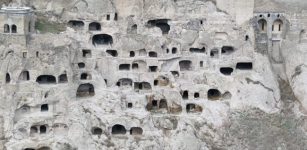 Spectacular Vardzia Cave Monastery – Huge Underground Complex Founded By The ‘Mountain Queen’ Tamar
Featured Stories | Dec 28, 2015
Spectacular Vardzia Cave Monastery – Huge Underground Complex Founded By The ‘Mountain Queen’ Tamar
Featured Stories | Dec 28, 2015 -
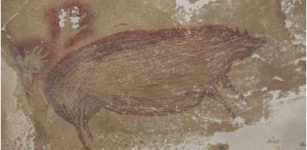 World’s Oldest Known Cave Painting – 45,000-Year-Old Depiction Of Wild Pig Discovered At Leang Tedongnge Cave
Archaeology | Jan 14, 2021
World’s Oldest Known Cave Painting – 45,000-Year-Old Depiction Of Wild Pig Discovered At Leang Tedongnge Cave
Archaeology | Jan 14, 2021 -
 Time Capsule: Sunken Ancient City Of Baiae
Archaeology | Mar 27, 2014
Time Capsule: Sunken Ancient City Of Baiae
Archaeology | Mar 27, 2014 -
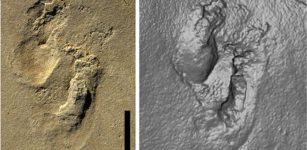 Controversial Discovery Of 5,7-Million-Year-Old Footprints On Crete Could Re-Write History Of Human Evolution
Archaeology | Sep 5, 2017
Controversial Discovery Of 5,7-Million-Year-Old Footprints On Crete Could Re-Write History Of Human Evolution
Archaeology | Sep 5, 2017 -
 8 Billion People: How Different The World Would Look If Neanderthals Had Prevailed
Featured Stories | Nov 18, 2022
8 Billion People: How Different The World Would Look If Neanderthals Had Prevailed
Featured Stories | Nov 18, 2022 -
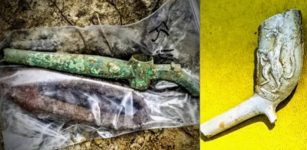 Tavern And Mysterious Tools Discovered In North Carolina – Stunning Ancient Time Capsule
Archaeology | Jun 19, 2019
Tavern And Mysterious Tools Discovered In North Carolina – Stunning Ancient Time Capsule
Archaeology | Jun 19, 2019 -
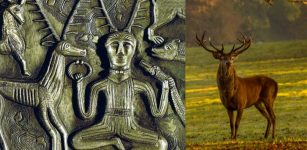 Cernunnos ‘Horned One’ – Powerful Continental God Preserved In Celtic Beliefs As Master Of Animals
Celtic Mythology | Dec 18, 2018
Cernunnos ‘Horned One’ – Powerful Continental God Preserved In Celtic Beliefs As Master Of Animals
Celtic Mythology | Dec 18, 2018 -
 Louhi – Witch Goddess Of The North And The Magical Artifact Sampo In Finnish Mythology
Featured Stories | Sep 21, 2017
Louhi – Witch Goddess Of The North And The Magical Artifact Sampo In Finnish Mythology
Featured Stories | Sep 21, 2017 -
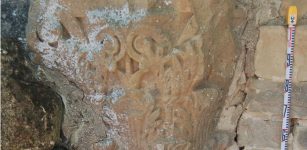 Large Previously Unknown Roman City Discovered At The Foot Of The Pyrenees
Archaeology | Jul 16, 2022
Large Previously Unknown Roman City Discovered At The Foot Of The Pyrenees
Archaeology | Jul 16, 2022 -
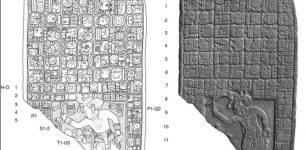 Long-Lost Ancient Maya Kingdom Unearthed In Mexico
Archaeology | Mar 12, 2020
Long-Lost Ancient Maya Kingdom Unearthed In Mexico
Archaeology | Mar 12, 2020 -
 What Was The Symbolism Behind Native American Feathers?
Ancient History Facts | Apr 21, 2017
What Was The Symbolism Behind Native American Feathers?
Ancient History Facts | Apr 21, 2017 -
 Octopus Lures From The Mariana Islands Are The Oldest Known Artifacts Of Their Kind In The World.
Archaeology | Jul 29, 2022
Octopus Lures From The Mariana Islands Are The Oldest Known Artifacts Of Their Kind In The World.
Archaeology | Jul 29, 2022 -
 Neanderthals Had More Children And Lived In Smaller Groups Than Was Previously Thought
Archaeology | May 28, 2019
Neanderthals Had More Children And Lived In Smaller Groups Than Was Previously Thought
Archaeology | May 28, 2019 -
 Knights Templar’s Mysterious Underground Chambers Hidden In The Caynton Caves Discovered
Archaeology | Apr 13, 2021
Knights Templar’s Mysterious Underground Chambers Hidden In The Caynton Caves Discovered
Archaeology | Apr 13, 2021 -
 Code Of Chivalry: ‘Knightly’ Behavior, Courageous Medieval Knights, Warriors And Superior Men
Featured Stories | Jun 5, 2016
Code Of Chivalry: ‘Knightly’ Behavior, Courageous Medieval Knights, Warriors And Superior Men
Featured Stories | Jun 5, 2016 -
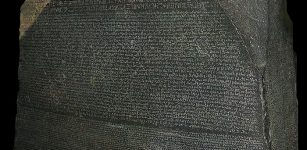 On This Day In History: Precious Rosetta Stone Found By Napoleonic Expedition To Egypt – On July 15, 1799
News | Jul 15, 2016
On This Day In History: Precious Rosetta Stone Found By Napoleonic Expedition To Egypt – On July 15, 1799
News | Jul 15, 2016 -
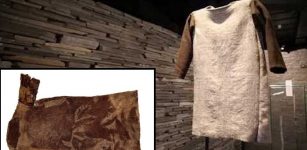 Reconstructed – Incredibly Well-Preserved 1,700-Year-Old Lendbreen Tunic – Norway’s Oldest Piece Of Clothing
Archaeology | Feb 21, 2018
Reconstructed – Incredibly Well-Preserved 1,700-Year-Old Lendbreen Tunic – Norway’s Oldest Piece Of Clothing
Archaeology | Feb 21, 2018 -
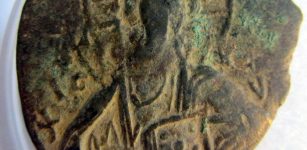 A 1,000-Year-Old Bronze Coin Accidentally Discovered By A Little Boy
Archaeology | Mar 12, 2020
A 1,000-Year-Old Bronze Coin Accidentally Discovered By A Little Boy
Archaeology | Mar 12, 2020 -
 Surprisingly Complex History Of Crocodiles – New Study
Evolution | Nov 23, 2023
Surprisingly Complex History Of Crocodiles – New Study
Evolution | Nov 23, 2023




